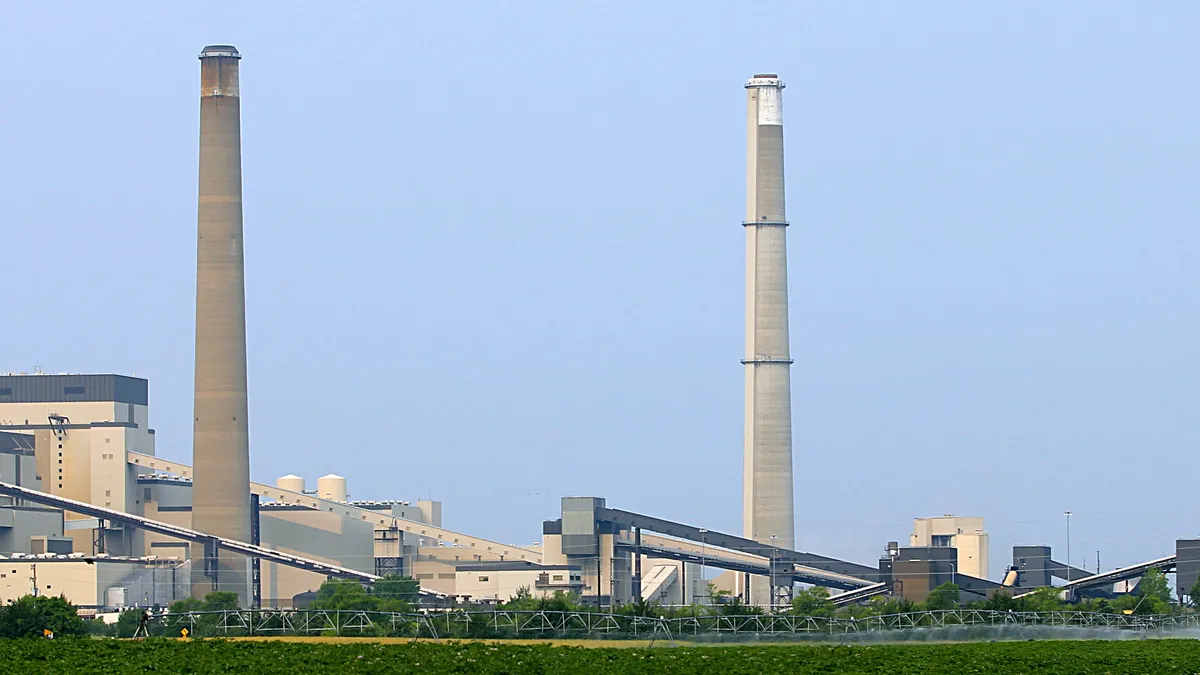Dive Brief:
-
The Minnesota Public Utilities Commission on Thursday approved Xcel Energy’s plan to build and own 460 MW of solar next to its roughly 1,780-MW coal-fired Sherco power plant, which is being retired in phases this decade.
-
The Inflation Reduction Act will likely reduce the project’s cost for ratepayers by about 30%, offsetting recent increases in its expected capital cost, Matthew Harris, Xcel lead assistant general counsel, told the PUC during its meeting. When Xcel proposed the project in April 2021, the company expected it would cost about $575 million.
-
The solar project will take advantage of Sherco’s “increasingly valuable interconnection rights,” according to Kevin Pranis, marketing manager for Laborers’ International Union of North America Minnesota & North Dakota, a union for construction workers that supported Xcel’s plan.
Dive Insight:
The Sherco Solar project is an example of the opportunities and challenges communities and utilities face across the United States as they shift away from fossil-fueled power plants. A Department of Energy report released this week, for example, found there were 190 operating coal plant sites and 125 recently retired plant sites that could host advanced nuclear reactors.
The PUC’s unanimous decision was a key first step in Xcel’s plan to replace its Sherco power plant in Becker, Minnesota. The utility plans to retire a 682-MW unit next year, followed by a 680-MW unit in 2026 and the final 517-MW unit in 2030.
Xcel’s Sherco Solar project grew out of a request for proposals that was won by National Grid Renewables. Despite concerns the RFP was flawed, the project was supported by the Minnesota Office of the Attorney General, which represents ratepayers, trade unions, local communities and groups such as Clean Grid Alliance and the Institute for Local Self-Reliance.
In April, Xcel asked the PUC to suspend its application because of supply chain shortages and the U.S. Department of Commerce’s anti-dumping circumvention investigation of solar cells. About three months later, the utility urged the agency to move ahead with its review of the project, even though it would cost “significantly” more than originally expected, according to a memo PUC staff prepared for the agency’s commissioners.
Under a provision aimed at protecting ratepayers, if a pending solar RFP issued Aug. 1 results in deals at a lower cost than the just-approved Sherco Solar project, Xcel will limit its initial cost recovery under a rate rider to the lower amount. If the project exceeds the cost cap, Xcel would be able to seek to recover all its costs when the project expenses are shifted from the rider to the utility’s ratebase.
In the pending RFP, Xcel is seeking at least 900 MW of solar or solar combined with energy that could be operating by the end of 2025. A third of the capacity would reuse the Sherco plant’s interconnection rights.
Those interconnection rights are a key aspect of the project. The Midcontinent Independent System Operator gives the owner of a retired power plant three years to reuse the plant’s interconnection rights, which cannot be transferred to another entity.
In MISO, those rights are growing more valuable, according to LIUNA Minnesota & North Dakota’s Pranis.
“It's critically important … that we preserve increasingly valuable interconnection rights that we think will only grow in importance and value over the decades to come as we try to build more renewable energy to replace fossil fuels,” Pranis said during the PUC meeting.
Planned renewable energy projects the union tracks in Minnesota and North Dakota have hit a “transmission wall,” according to Pranis. Few have been able to get interconnection agreements that are needed to gain access to the grid, he said, noting that some have been abandoned because of a lack of transmission.
Xcel is still trying to understand exactly how the IRA will affect the project, Harris said, noting the utility company is working with the Internal Revenue Service on pending guidance on how the law should be interpreted.
Xcel expects the Sherco Solar project will create more than 900 union construction jobs with about $115 million in wages and generate $240 million in local benefits over the life of the project.
Also, the project will provide an opportunity for 75 participants in Xcel’s Workforce Development and Training pilot program, which is for people from traditionally underserved communities, according to the utility.
“By investing in this huge solar energy project now, Minnesotans will see the benefits of a cost-effective resource that will reduce pollution and provide reliable service in the future,” Minnesota PUC Chair Katie Sieben said in a statement. “Sherco Solar is one of the most important renewable energy projects in Minnesota’s history and I’m proud of the collaborative work by so many.”















